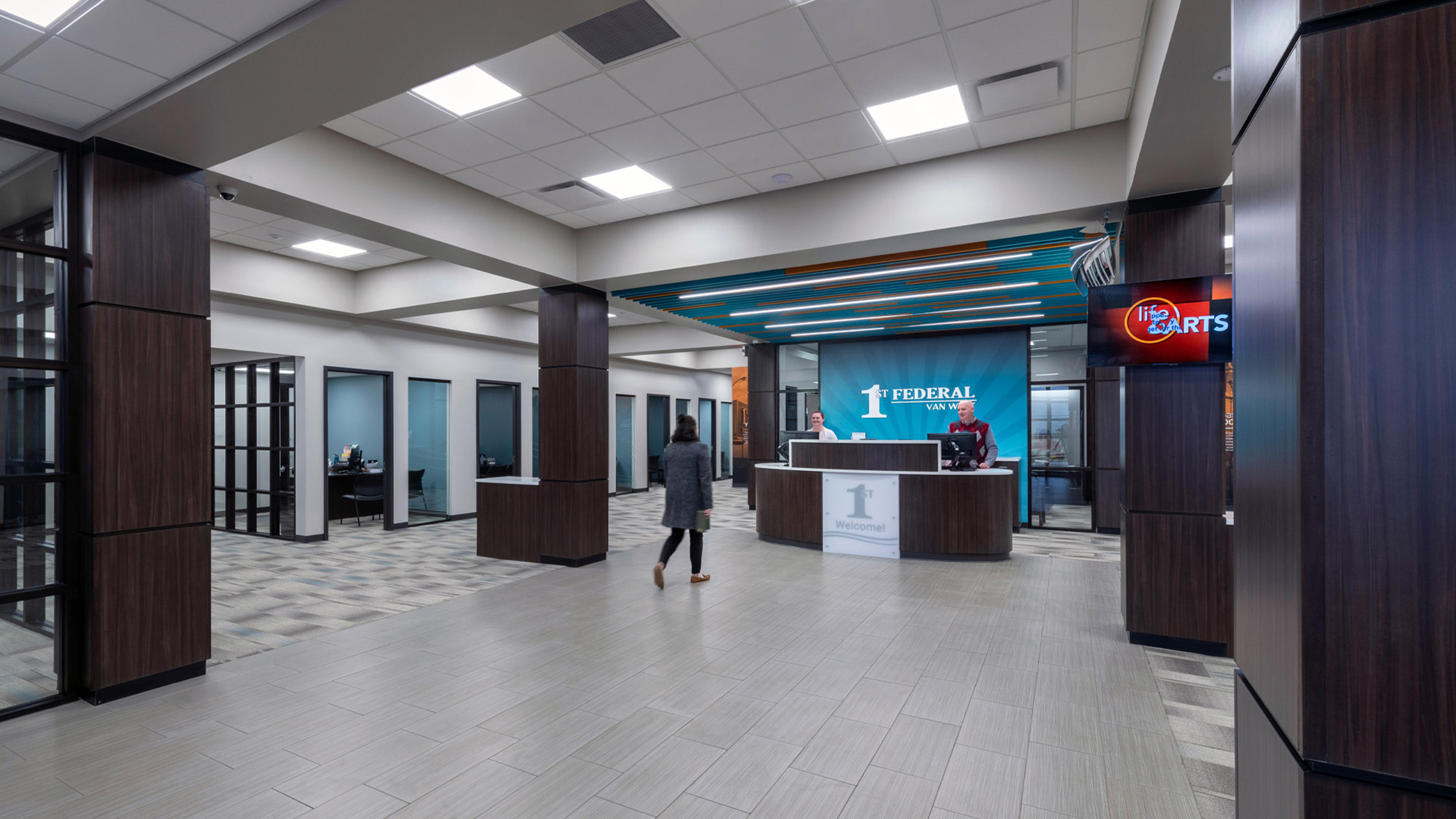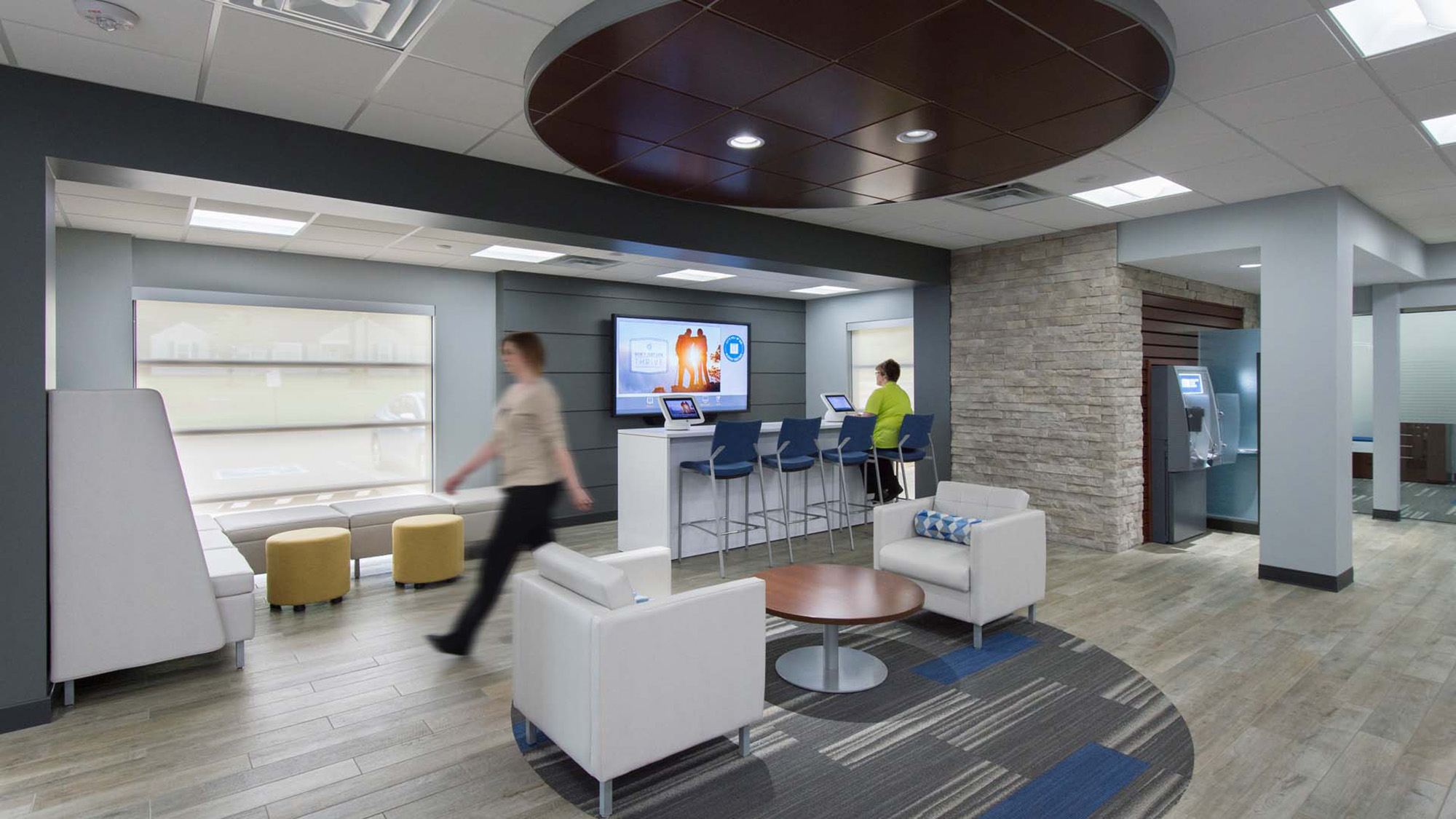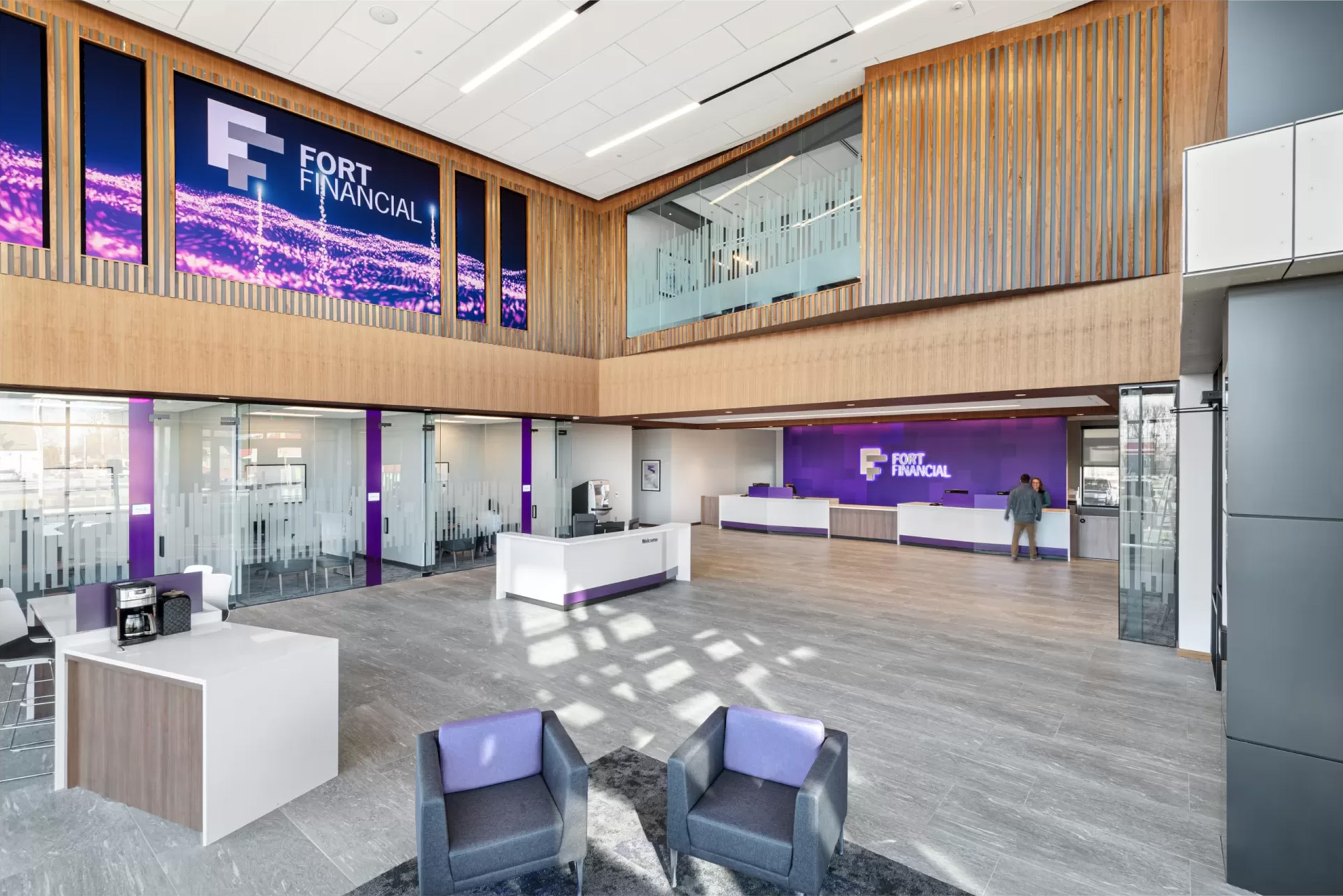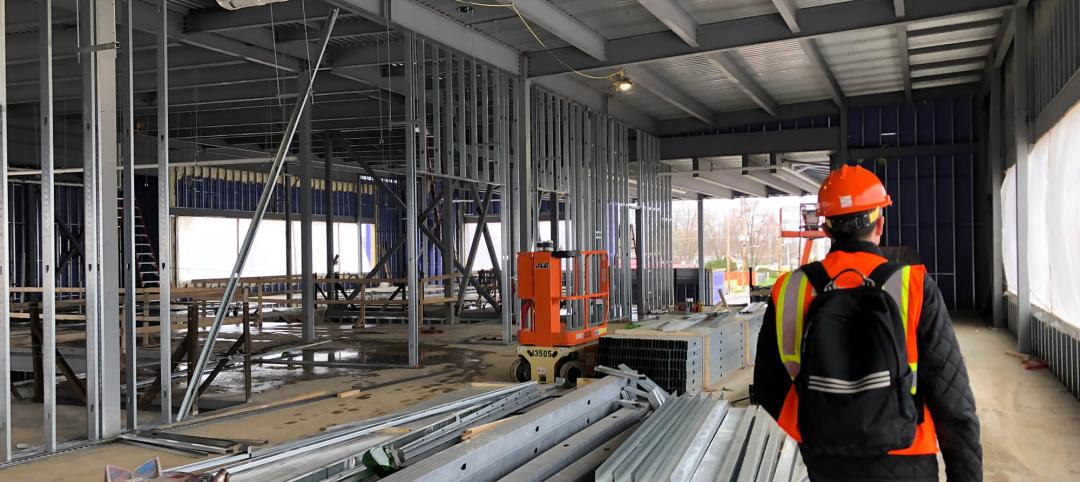Retail branches, as the public face for financial organizations in the community, can be on their greatest assets. Promoting brand identity, connecting with potential and existing customers, and engaging their communities—the importance of branch location and visibility cannot be overstated.
Below are three steps to crafting the ideal branch:
1. Networks

One of the biggest challenges that financial institutions face is figuring out where to build a branch—or whether to reinvest in an existing branch or not. A network of branches across the community, positioned at critical points of interest, enable customers easy access to your financial institution and your services.
Through location analytics and conversations with design experts, selecting the ideal site for a new presence can be done with confidence. The same process will likely identify that many of your existing branches are already uniquely located and could benefit from a refresh.
2. Sites

After identifying a new location to grow your network, individual site selection requires due diligence, and maybe just a bit of luck! What sites are on the market? Are they shovel-ready sites, or do they house an existing building? Many variables play into the availability of a key site at any given time.
A thorough review of visibility, accessibility, and buildability can help narrow the search for sites worth pursuing. The perfect site rarely exists; but identifying and weighing as many of the challenges and opportunities as you can will set the groundwork for success.
3. Layouts

Site selection and the due diligence process often inspires thoughts about where the branch could sit, how parking is organized around the building, or where remote ITMs could be positioned. Conceptual layouts take a birds-eye-view of the site to locate these major pieces required to make decisions about visibility, circulation, and landscape.
How your branch fits on a given site will directly impact your goals and help you establish a key node within your network. This is where the fun really begins!
More from Author
Design Collaborative | Oct 14, 2024
Higher education design for the first-gen college student
In this Design Collaborative blog, Yogen Solanki, Assoc. AIA, shares how architecture and design can help higher education institutions address some of the challenges faced by first-generation students.
Design Collaborative | Sep 16, 2024
Maximizing office square footage through ‘agile planning’
Lauren Elliott, RID, NCIDQ, Director of Interior Design, Design Collaborative, shares tips for a designing with a popular and flexible workspace model: Agile planning.
Design Collaborative | Aug 5, 2024
Mastering the art of project schedule: Expert insights on design and construction
We sat down with two experts in the design field, Ron Dick (Founding Partner and Architect) and Mike Niezer (COO and Architect), to talk about everything you need to know about the entire process.
Design Collaborative | Jul 1, 2024
Mastering office layouts: 5 primary models for maximum efficiency and productivity
When laying out an office, there are many factors to consider. It’s important to maximize the space, but it’s equally important to make sure the design allows employees to work efficiently.
Design Collaborative | Jun 3, 2024
Escalation: Predicting project costs in a volatile market
Thad Berkes, Chief Cost Estimator, Design Collaborative, shares that one of the major hurdles that Design Collaborative attempts to forecast for its commercial construction projects is escalation.
Design Collaborative | Mar 4, 2024
Illuminating your path to energy efficiency
Design Collaborative's Kelsey Rowe, PE, CLD, shares some tools, resources, and next steps to guide you through the process of lighting design.
Design Collaborative | Feb 1, 2024
Prioritizing water quality with the WELL Building Standard
In this edition of Building WELLness, DC WELL Accredited Professionals Hannah Arthur and Alex Kircher highlight an important item of the WELL Building Standard: water.
Design Collaborative | Jan 19, 2024
How to strengthen office design as employees return to work
Adam James, AIA, Senior Architect, Design Collaborative, shares office design tips for the increasingly dynamic workplace.
Design Collaborative | Dec 12, 2023
Transforming workplaces for employee mental health
Lauren Elliott, Director of Interior Design, Design Collaborative, shares practical tips and strategies for workplace renovation that prioritizes employee mental health.
Design Collaborative | Oct 9, 2023
Design solutions for mental health as a secondary diagnosis
Rachel Vedder, RA, LEED AP, Senior Architect, Design Collaborative, shares two design solutions for hospitals treating behavioral health patients.
















